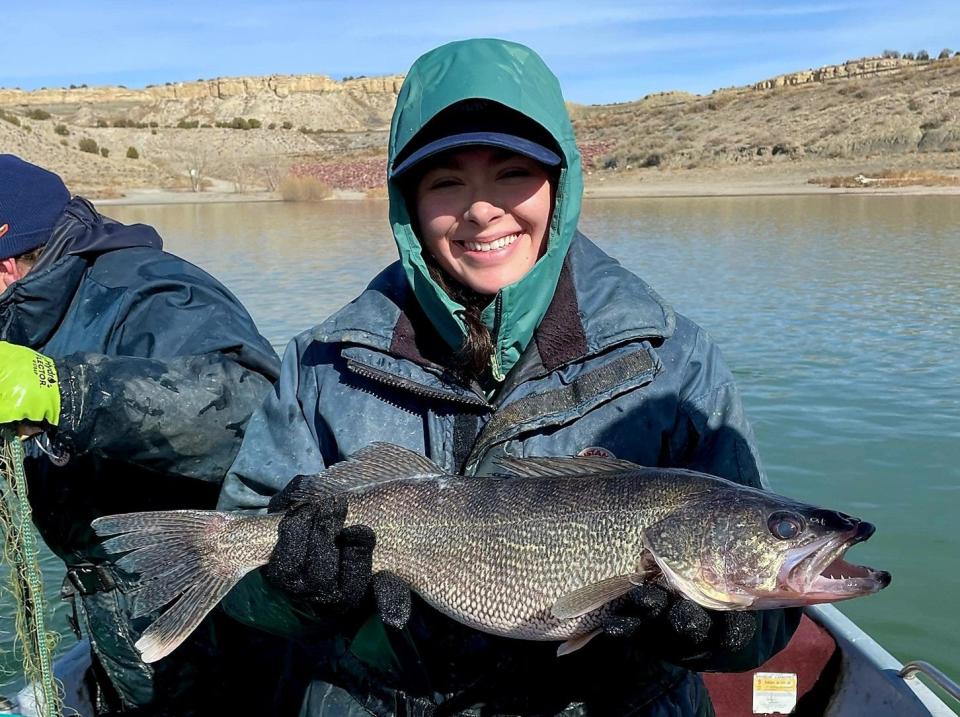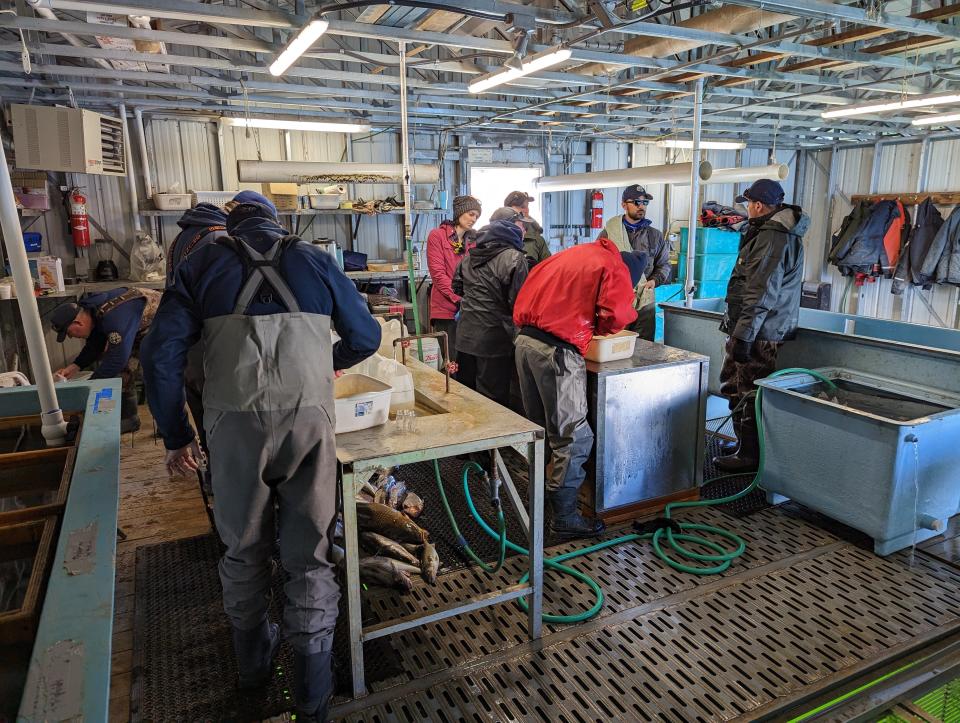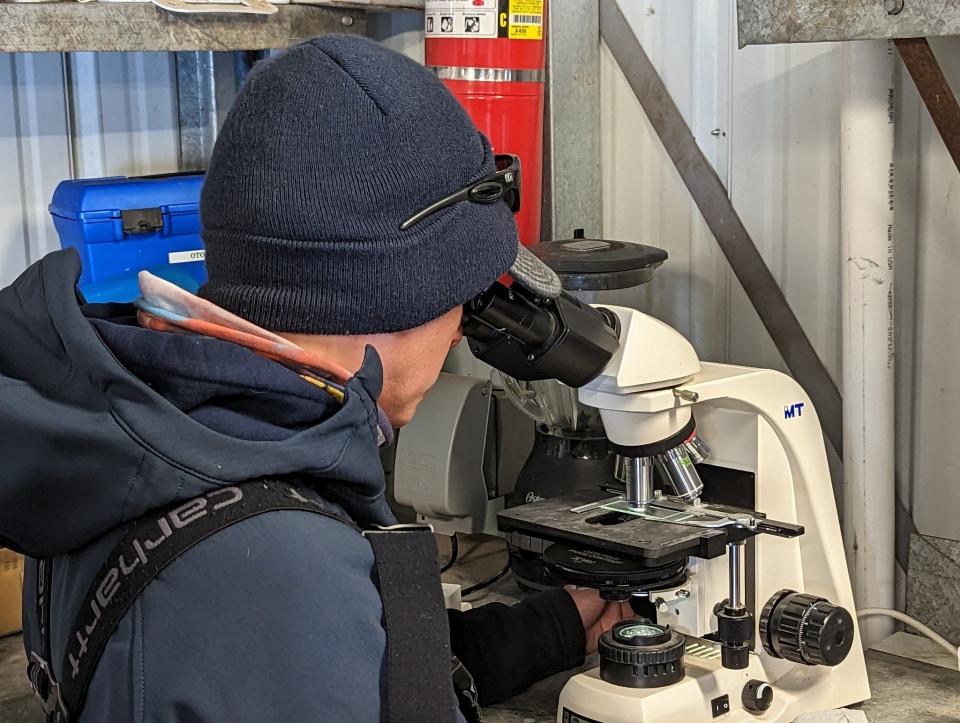Spawn stars: Annual walleye spawn wrapping up at Lake Pueblo

The annual walleye spawn is coming to an end at Lake Pueblo State Park, where Colorado Parks and Wildlife has been facilitating a massive catch and spawn operation since March 17.
This year, CPW set a goal of growing 112 million walleye between operations at Lake Pueblo and Cherry Creek Reservoir to be stocked in Front Range reservoirs and traded with neighboring states for other fish species.
CPW southeast region spokesperson Bill Vogrin told the Chieftain Wednesday that this year’s operation has already hit its goal and would likely conclude at Lake Pueblo on Thursday.
Walleye, which can be identified by their two separate dorsal fins and a white tipped tail, are one of the most popular fish targeted by Colorado anglers. Since their introduction to Colorado in 1949, walleye have primarily been placed in most large warm- and cool-water reservoirs.
The fish are "one of Colorado’s tastiest" according to CPW, and can grow to tremendous sizes, as they've been caught in excess of 18 pounds.
Outdoor recreation news: Colorado City parents band together to raise funds and renovate town's only park

Each year when walleye are believed to be naturally spawning based on factors like weather conditions and lake temperature, CPW aquatic biologists team up with hatchery staff and volunteers for a full-court press of catching and spawning in the state wildlife agency’s version of March Madness.
The operation entails catching the fish in 400-foot gill nets placed in areas of the lake where walleye typically spawn, taking them back to shore and squeezing from them roe (eggs) and milt (sperm), which are then carefully mixed together using only a delicate goose feather. The fertilized eggs are then sent to a hatchery to be raised.
In addition to stocking lakes across Colorado, the walleye spawned are used by CPW to trade with other states such as North Dakota, South Dakota, Kansas, New Mexico and others, for species of game fish unavailable in the Centennial State.
Things to do coming to Pueblo: Lil Jon, Gabriel Iglesias to headline 2023 Colorado State Fair

The annual undertaking is essential for CPW to ensure there’s plenty of fish for Colorado anglers: more than 1.1 million people bought state fishing licenses in 2022.
And it’s not just Colorado sportspersons who benefit from the state’s fisheries, as angling provides $2.4 billion to Colorado's economy each year, according to CPW.
“It’s a massive operation,” Vogrin said. “With 1.1 million fishing licenses sold last year, that’s a lot of people depending on us living up to our mission and that mission is 'any fish you wish.' That’s the hatchery mission and we take it seriously. This is proof of that.”
Chieftain editor Zach Hillstrom can be reached at zhillstrom@gannett.com or on Twitter @ZachHillstrom
This article originally appeared on The Pueblo Chieftain: Colorado walleye spawn wrapping up after 112 million eggs fertilized

 Yahoo Autos
Yahoo Autos 